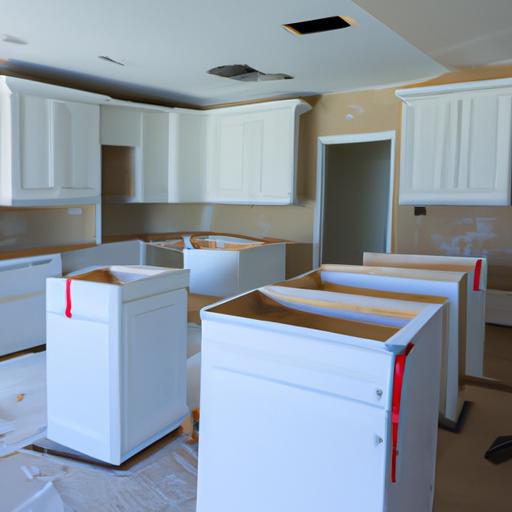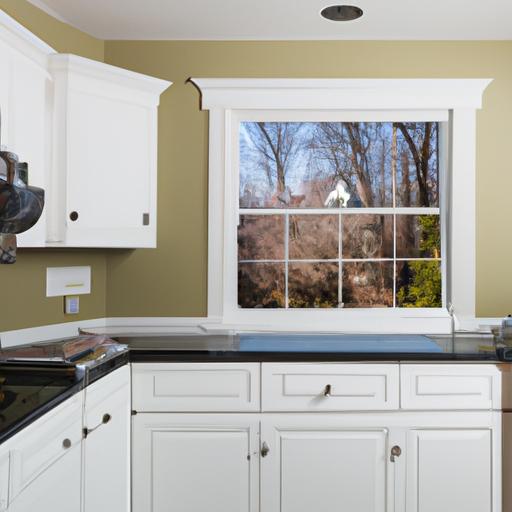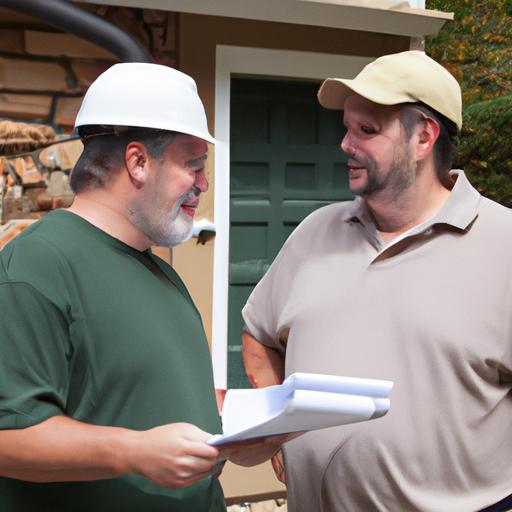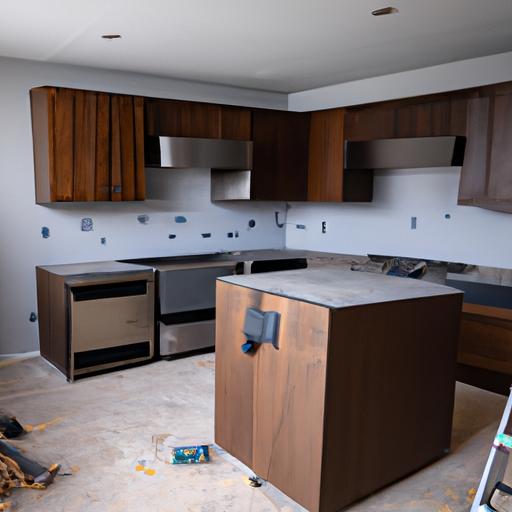Unsecured Home Improvement Loans: Transforming Your Home Without Collateral
Introduction
In the realm of home improvement, where dreams of renovation and revitalization take shape, the key to unlocking your vision often lies in securing the necessary funds. Unsecured home improvement loans emerge as a beacon of hope for homeowners seeking to breathe new life into their living spaces without the burden of collateral. But what exactly are unsecured home improvement loans?
Unsecured home improvement loans represent a financial lifeline for those looking to enhance their abode without pledging assets as security. These loans hold a pivotal role in the world of home improvement projects, offering a flexible and accessible means to turn your renovation dreams into reality. As we delve deeper into the realm of unsecured loans for home improvement, we uncover the significance of these financial tools in empowering homeowners to embark on transformational journeys within their living spaces. Let’s explore the nuances of unsecured home improvement loans and discover the myriad benefits they bring to the table.
Understanding Unsecured Home Improvement Loans
What Are Unsecured Loans?
Unsecured loans, in the realm of home improvement financing, stand as a beacon of flexibility and accessibility. Unlike secured loans that require collateral, unsecured loans do not necessitate the pledging of assets to secure the loan amount. This feature makes unsecured loans an attractive option for homeowners looking to embark on renovation projects without putting their assets at risk.
Distinguishing Unsecured from Secured Loans
The fundamental difference between unsecured and secured loans lies in the presence of collateral. Secured loans mandate the provision of assets, such as property or vehicles, to secure the loan amount, thereby reducing the lender’s risk. On the other hand, unsecured loans do not require collateral, relying instead on the borrower’s creditworthiness to determine loan approval and terms. This distinction makes unsecured loans a viable solution for individuals who may not have valuable assets to pledge but possess a solid credit history.
Eligibility Criteria for Unsecured Home Improvement Loans
To qualify for unsecured home improvement loans, lenders typically assess various factors, including the borrower’s credit score, income stability, and debt-to-income ratio. A strong credit score and a history of timely payments can increase your chances of approval for an unsecured loan. Additionally, demonstrating a stable income and managing existing debts responsibly can further bolster your eligibility for unsecured home improvement financing.
Pros and Cons of Unsecured Home Improvement Loans
Advantages of Unsecured Loans for Home Improvement
When it comes to embarking on home improvement projects, unsecured loans offer a plethora of advantages that cater to the needs and preferences of homeowners. One of the primary benefits of unsecured loans is the absence of collateral requirements, providing a sense of relief for those hesitant to put their assets on the line. Additionally, unsecured loans typically have a quicker approval process, allowing you to kickstart your renovation plans without prolonged waiting periods. With flexible repayment terms and competitive interest rates, unsecured loans offer a convenient and accessible financing option for your home improvement endeavors.
Disadvantages of Opting for Unsecured Loans
While unsecured loans present a host of benefits, they also come with certain drawbacks that warrant consideration. One of the main disadvantages of unsecured loans is the higher interest rates compared to secured loans, reflecting the increased risk for lenders in the absence of collateral. Additionally, the loan amounts for unsecured loans may be limited, potentially constraining your renovation budget. It’s essential to weigh these disadvantages against the advantages to determine if an unsecured loan aligns with your financial goals and capabilities.
Considerations Before Applying for an Unsecured Loan
Before diving into the realm of unsecured home improvement loans, it’s crucial to assess your financial situation and goals to ensure a well-informed decision. Evaluate your credit score and financial stability to gauge your eligibility and determine the loan amount you can comfortably repay. Research different lenders to compare terms, interest rates, and repayment options to secure the best deal for your home improvement project. By carefully considering these factors, you can navigate the landscape of unsecured loans with confidence and clarity.
How to Apply for Unsecured Home Improvement Loans
Researching Lenders that Offer Unsecured Loans
When embarking on the journey to secure an unsecured home improvement loan, the first step is to research and identify reputable lenders that specialize in offering such financial products. Conducting thorough research will not only help you compare interest rates and terms but also ensure that you choose a lender that aligns with your financial goals and requirements. Look for lenders with a proven track record of providing competitive rates and excellent customer service to make your borrowing experience seamless and rewarding.
Understanding the Application Process
Navigating the application process for unsecured home improvement loans can seem daunting at first, but with a clear understanding of the requirements and steps involved, you can streamline the process and increase your chances of approval. Be prepared to provide details about your income, credit history, and the specific purpose of the loan. Understanding the documentation needed and being transparent with your financial information will not only expedite the application process but also showcase your reliability as a borrower.
Tips for Improving Your Chances of Approval
Securing approval for an unsecured home improvement loan hinges on various factors, including your credit score, income stability, and debt-to-income ratio. To enhance your chances of approval, consider taking proactive steps such as improving your credit score, reducing existing debts, and showcasing a stable income. Additionally, providing a detailed plan of your home improvement project and demonstrating your ability to repay the loan can bolster your credibility in the eyes of lenders. By following these tips and presenting yourself as a responsible borrower, you can increase the likelihood of securing the unsecured loan you need to elevate your home.
Alternatives to Unsecured Home Improvement Loans
Exploring Other Financing Options for Home Improvement
When embarking on a home improvement project, the array of financing options available can be overwhelming. Apart from unsecured loans, homeowners can explore various alternatives to fund their renovation endeavors. From secured loans to personal loans and credit cards, each option comes with its own set of advantages and considerations. By delving into the realm of alternative financing avenues, you can tailor your financial approach to suit your specific project requirements and budget constraints.
Comparing Unsecured Loans with Secured Loans
One crucial decision that homeowners face when seeking financing for home improvement is choosing between unsecured and secured loans. While unsecured loans do not require collateral, secured loans necessitate assets as security. Understanding the differences between these two loan types and their respective implications on interest rates, repayment terms, and risk factors is essential for making an informed decision that aligns with your financial objectives and preferences.
Considering Personal Loans or Credit Cards for Smaller Projects
For smaller-scale home improvement projects that do not warrant a substantial loan amount, personal loans and credit cards emerge as viable financing options. Personal loans provide a lump sum amount with fixed repayment terms, while credit cards offer flexibility in making incremental payments. By weighing the pros and cons of personal loans and credit cards for minor renovations, homeowners can optimize their financing strategy to suit the scope and budget of their projects.
Conclusion
In conclusion, unsecured home improvement loans offer a pathway to realizing your vision of a transformed living space without the burden of collateral. These financial tools provide flexibility, accessibility, and convenience, making them a valuable asset for homeowners looking to embark on renovation projects. By understanding the benefits, eligibility criteria, and application process of unsecured loans, you can make informed decisions that align with your home improvement goals.
As you navigate the landscape of home improvement financing, consider the pros and cons of unsecured loans, explore alternative options, and weigh the potential impact on your financial well-being. Remember, your home is more than just a shelter—it’s a canvas for your dreams and aspirations. With the right financial support, you can breathe new life into your living space and create a sanctuary that reflects your unique style and personality. Embrace the possibilities that unsecured home improvement loans offer and take the first step towards transforming your home today.






